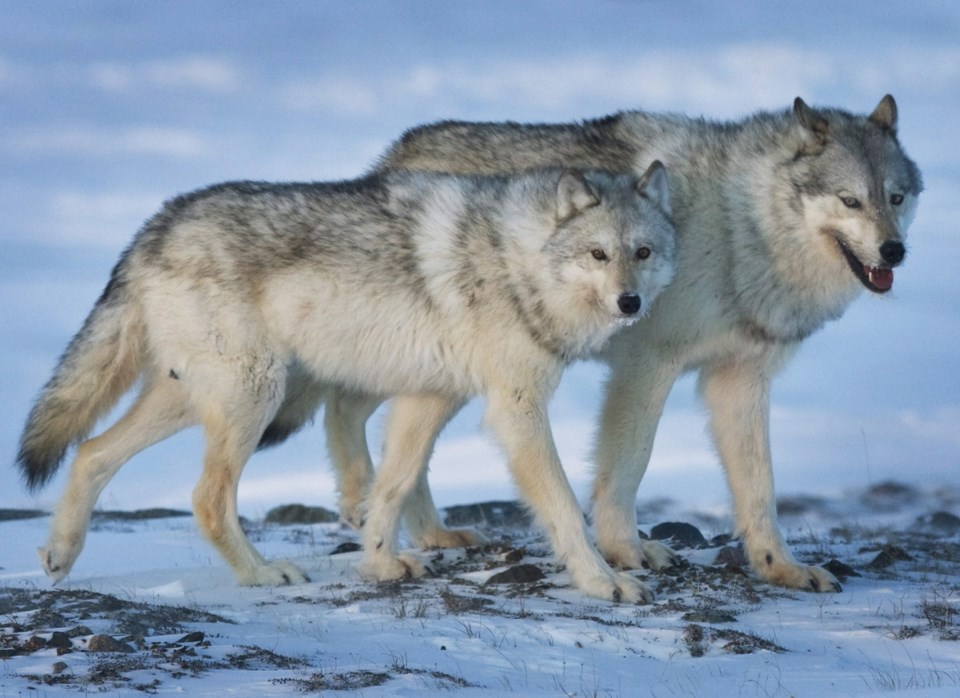Re: “Hard line on saving caribou,” March 12.
I recognize that this is a difficult time for debates on caribou-recovery options, especially predator controls such as wolf culls and organized predator bounties. However, this does not mean we invent science to support age-old predator rhetoric.
Robert Serrouya and his team have made several concerning comments regarding the viability of killing wolves to save caribou. Serrouya has rendered interpretive conclusions, which, upon review of his paper, appear to lack a critical assessment of cumulative effects.
These conclusions, which support the continued killing of wolves in B.C. in order to save caribou, are at best an attempt to rationalize a century-old management practice of “killing to conserve.” In an effort to correct misinformation, I would like to point out the following:
First, and most important, the study did not receive any ethics approval. Serrouya states: “No university personnel were involved in planning or conducting predator reductions, thus obviating the need for university animal-care review or approvals.”
Circumnavigating an ethics-review process by relying on others to do your killing for you flies in the face of ethical scientific research. On this basis alone, the study should not be accepted or given any scientific weight.
Second, in reviewing the paper, I note that the proximate cause of caribou population decline is identified as “predator” (largely wolf) while habitat loss is identified as the ultimate cause of decline. Serrouya contends that habitat restoration will take too long and therefore the removal of predators is a “go hard or go home” approach to caribou recovery.
However, there is no scientific explanation presented in the paper that supports a finding that habitat recovery (which has legions of ecological variations by herd) “takes too long.” He’s just guessing. While proximity is advanced as a general argument for predator removal, the factors contributing to proximity access (such as roads for mining, logging, and oil and gas operations) have been ignored.
What Serrouya is driving at is better described as impacts of proximity on population recovery. Proximity is not simply directly related to predator populations but rather the industrial and recreational activities on the land, which both a) increase predator access and b) remove critical habitat.
Therefore, the impacts of proximity and the cumulative effects of human actions have to be understood and accounted for before conclusions can be made regarding predator-control options.
We must first understand the access that our human actions is causing, followed by the actual presence and numbers of predators, before conclusions can be made. For access, look at alternative options such as access-denial strategies, defence through environmental design initiatives, and road closures and restorations. In this way, we can control risk potential without altering predator presence — resulting in a reduction of proximity impacts to caribou. Or put more simply, the government must refuse to issue logging permits, mining permits, and oil and gas exploration permits in critical caribou habitat.
Third, the B.C. government in the past 12 months has approved more than 80 logging cut blocks located, in part, within critical caribou habitat. Oil and gas operations continue, as do mining activities and exploration. Caribou population dispersion across home ranges is a likely occurrence when industrial activities encroach on herds and natural food supplies.
The variables of industrial activity were not considered in this study. It can be argued that industrial activities within critical habitat areas are the single most proximate threat to caribou herds — not predators.
Having said all this, I agree with Serrouya on one point. That is, inclusive of urban expansion, industrial activities, habitat loss and dwindling food supplies, the plight of the caribou is worthy of our attention and assistance. However, where we differ is that I see cumulative effects as key.
Government must stop allowing operations in critical habitat before it can justify any killing of predators. Killing wolves because it’s quicker is simply a Band-Aid trying to stop a gushing environmental wound. “Go hard” means to me the government needs to tell industrial operators in caribou habitat to “go home” — they are the largest agent of decline.
Finally, it is important for the public to realize that this paper was primarily producing data to make the case that adaptive management is a practice that can apply to wildlife recovery work. In my view, caribou was probably a less than desirable species to begin testing new theories that could be proven ineffective over time, especially when the long-term cumulative effects of killing predators are not even on the table for discussion.
Bryce Casavant holds a recent fellowship with the Social Science and Humanities Research Council of Canada. He is a doctoral candidate at Royal Roads University, where he studies wildlife issues. He is employed as a senior investigator and special provincial constable with the province of B.C. and is a former B.C. conservation officer.



